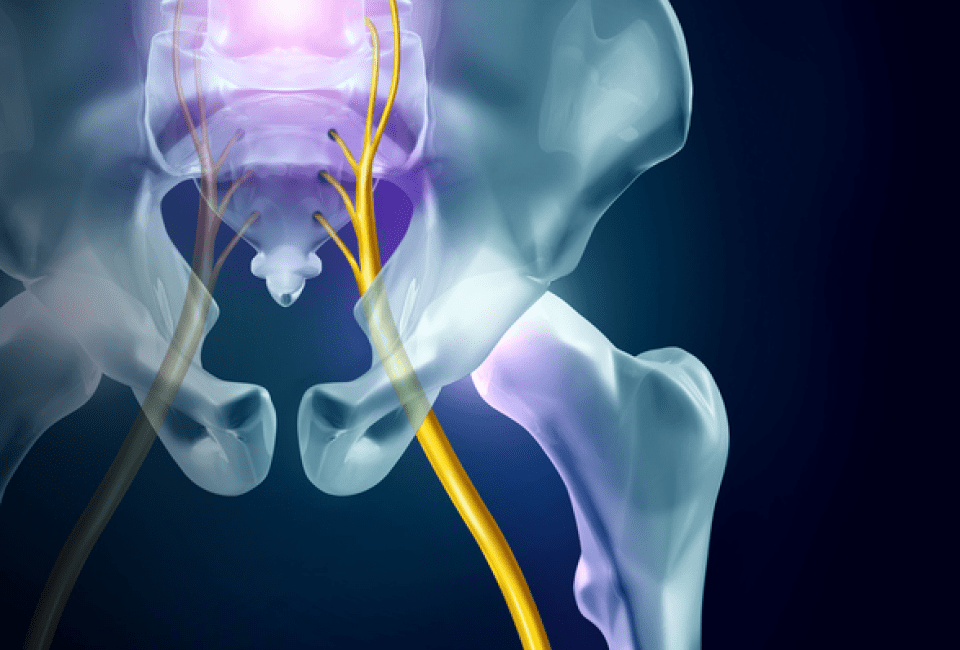
Pain in your legs? It could be Sciatica.
One of the largest nerves in your body is the sciatic nerve which stretches from your lower back, along your hips and down your legs to your feet. When your sciatic nerve is pinched or compressed, you may experience pain and tingling. In some instances, you may not experience anything at all- just an unusual numbness. Your physician may classify the sciatica pain as lumbar radiculopathy.
When we report that we are suffering from sciatica, we are actually describing a symptom, not a medical condition. In most cases, the root cause of the sciatica pain is a herniated disc in your lumbar spine (L4, L5) or lower spine (S1, S2 or S3). Part of the disc may be compressing the sciatic nerve in such a way that it causes the nerves in your legs to trigger a pain response.
How is Sciatica diagnosed?
Finding the root cause of your sciatica pain requires clear communication between the patient and the doctor. You may be asked to walk on your heels or toes; or lie on your back and raise your legs, one at a time. What’s interesting about sciatica is that the radiating pain in certain parts of your legs, hips or thighs relate directly to specific vertebral discs in your lower back. During your physical examination, your doctor will also test for cauda equina syndrome and referred leg pain.
Like the pain from a herniated disc, the radiating pain along your sciatica occurs when a protruding disc in your lower back causes pain in the surrounding area and into the back of your thighs and legs. Like herniated discs, sciatica is often brought on by age and is not usually remedied by surgery.
How is sciatica treated?
Once your doctor has determined that the root cause of your pain is compression of your sciatic nerve, the initial conservative treatment usually consists of anti-inflammatory medications and dramatically reduced physical activity. For extremely acute cases, bedrest of no longer than two weeks is often suggested. Some physicians may prescribe muscle relaxants, anti-pain medications, tricyclic antidepressants and anti-seizure medications.
Dr. Melamed will steer clear of any opioid-based treatment plan and will suggest a holistic approach that may include acupuncture sessions, chiropractic adjustments, stretching exercises, yoga and other integrative medicine techniques that allow the body to heal itself.
If the radicular pain does not subside, then an EMG (electromyography) test may be recommended. The test will confirm nerve compression along your spine and help pinpoint the area or areas where the nerve compression is occurring.
When the conservative, non-invasive measures do not relieve the acute sciatica pain, and you experience weakness or have continence problems, then surgery may be the best solution to decompress the sciatic nerve.
Dr. Melamed is experienced at performing a minimally invasive procedure called a microdiscectomy which only removes the part of the disc that is compressing the sciatic nerve. The out-patient surgery leaves a tiny scar and requires no opioids during or after the operation. Recovery is usually swift with a low risk of infection.
Live Sciatica Free!
Click on the “Schedule Appointment” button at the top of this page, or call Dr. Melamed’s office for more information. This is a great day to deal with your sciatica pain. Don’t let it slow you down. Call us at 424-21-SPINE



